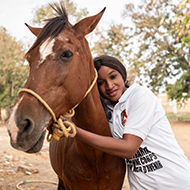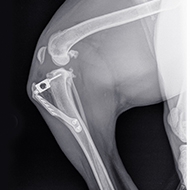For search and rescue dogs, the team added sensors that can detect environmental hazards such as gas leaks.
New wearable technology aims to extend and improve dogs' lives
US scientists have come up with a harness that can monitor a dog's physical and emotional state remotely. It is hoped the technology could extend and improve the lives of assistance dogs and those working in search and rescue.
A fully functional prototype has been developed by researchers from the North Carolina State University. Sensors on the harness monitor and interpret signals including posture, heart rate and body temperature.
As well as tracking the dog's physical wellbeing, the technology offers clues to its emotional state, for example if it is excited or stressed. The data is transmitted from the harness using a computer the size of a deck of cards. The harness also incorporates speakers and vibrating motors so the owner or handler can communicate with the dog.
In addition to these core features, it can be customised for specific functions. For example, researchers say the technology has important applications for working dogs.
"We’re very interested in addressing stress in working dogs, such as guide dogs for the blind," explains Sean Mealin, a PhD student at NC State and co-author of the paper.
Mr Mealin says the technology may help handlers "identify and mitigate stress" in their dogs, extending the length and quality of their lives.
"It’s an important issue. Particularly because guide dogs are bred and trained not to display signs of stress in their behaviour."
For search and rescue dogs, the team added sensors that can detect environmental hazards such as gas leaks, as well as cameras and microphones to gather further information.
Researchers say they will continue to refine the design of the harness and explore more applications for the technology. For example, the team are in the process of making improvements to the physiological sensors so the technology can be used in animal shelters and hospitals. Researchers have also carried out work to apply the platform to dog training.
"This platform is an amazing tool, and we’re excited about using it to improve the bond between dogs and their humans,” says Dr Barbara Sherman, co-author of the paper and clinical professor at NC State's College of Veterinary Medicine.
Image © North Carolina State University







 Birmingham Dogs Home has issued an urgent winter appeal as it faces more challenges over the Christmas period.
Birmingham Dogs Home has issued an urgent winter appeal as it faces more challenges over the Christmas period.
